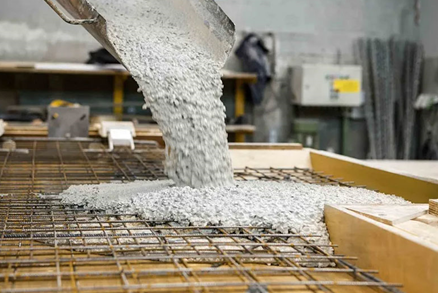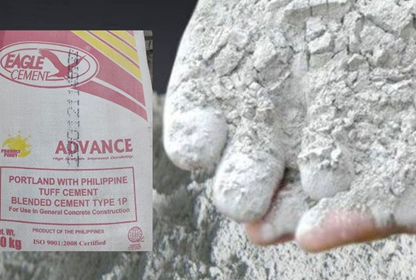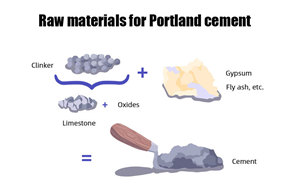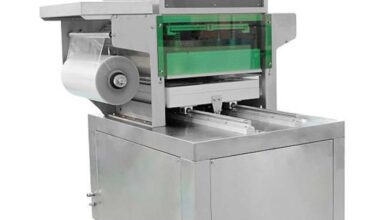In the world of construction, there is one material that stands as the cornerstone of modern infrastructure – Portland cement. Its ubiquitous presence in buildings, bridges, and roads is a testament to its remarkable versatility and strength.

Portland cement is not just a mixture of various compounds; it is the very foundation upon which modern civilization is built. In this article, we will delve into the intricacies of Portland cement, exploring what it is, why it is the preferred choice in construction, and how it is produced.
What is Portland Cement?
Portland cement, often simply referred to as cement, is a powdery substance that, when mixed with water, forms a paste that hardens over time. This hardened paste, combined with aggregates such as sand and gravel, creates concrete, the most widely used construction material on the planet. But what sets Portland cement apart from other types of cement?
The origin of its name can be traced back to the early 19th century, when a British stonemason named Joseph Aspdin developed a cement that resembled the color of Portland stone, a type of limestone found on the Isle of Portland in England. This cement, initially known as “Patent Portland Cement,” soon became the standard in construction due to its superior strength and durability.

Portland cement primarily consists of four main compounds:
- Tricalcium Silicate (C3S): This compound is responsible for the early strength of cement. It reacts rapidly with water, creating calcium silicate hydrate, which forms a strong and stable structure within the cement paste.
- Dicalcium Silicate (C2S): C2S is another critical component of Portland cement, contributing to its long-term strength. It reacts more slowly than C2S but continues to strengthen the concrete over time.
- Tricalcium Aluminate (C3A): C3A provides rapid setting properties to cement. However, excessive amounts of C3A can lead to the formation of undesirable compounds and reduced durability.
- Tetracalcium Aluminoferrite (C4AF): C4AF contributes to the early strength of cement, and it also helps in resisting sulfate attack.
Besides these major compounds, Portland cement may contain small amounts of other minerals and additives to enhance specific properties, such as gypsum to control setting time.
See Also: Top Tips for Choosing Mechanical Contractors in Fort Worth
Why Choose Portland Cement?
- Versatility: Portland cement’s adaptability is unmatched. It can be used in a wide range of construction applications, from residential buildings to massive infrastructure projects like dams and skyscrapers.
- Strength and Durability: The ability of Portland cement to provide high compressive strength and long-term durability is a primary reason for its widespread use. It can withstand the forces of nature and time, making it an ideal choice for structures that need to stand the test of time.
- Ease of Use: Mixing Portland cement with water is a straightforward process, making it accessible to both professionals and DIY enthusiasts. Its versatility allows it to be molded into various shapes and sizes, accommodating a wide range of design needs.
- Cost-Effective: Portland cement offers an excellent balance between cost and performance. It provides exceptional durability at a relatively low cost per unit of strength, making it an economically sound choice for construction projects.
- Sustainability: In recent years, the cement industry has made significant strides in reducing the environmental impact of Portland cement production. Alternative materials, like fly ash and slag, are often used as partial replacements for clinker (the main ingredient in cement), reducing carbon emissions. Moreover, ongoing research focuses on developing greener cement production methods.
How to Produce Portland Cement?
The production of Portland cement is a complex and energy-intensive process that involves several distinct stages. Here, we outline the key steps in producing this essential construction material:
Step 1 Mining and Raw Material Preparation: The primary raw materials for Portland cement production are limestone, clay, and iron ore. These materials are typically extracted from quarries or mines. Limestone, the main source of calcium in cement, is first crushed and then mixed with clay and iron ore in precise proportions to form a raw meal.

Step 2 Clinker Production: The raw meal is then heated in a rotary kiln at temperatures reaching around 2,700 degrees Fahrenheit (1,480 degrees Celsius). This process, known as calcination, transforms the raw materials into small, marble-sized nodules called clinker. The intense heat causes chemical reactions that result in the formation of the essential compounds – C3S, C2S, C3A, and C4AF.
Step 3 Cooling: After exiting the kiln, the clinker is rapidly cooled, typically using air or water, to prevent the formation of undesirable compounds and maintain the desired mineral structure.
Step 4 Grinding: The cooled clinker is then finely ground to produce a fine powder, known as Portland cement. During this step, gypsum is added to regulate the setting time of the cement.
Step 5 Packaging and Distribution: The finished Portland cement is then packaged in bags or stored in silos for distribution to construction sites and ready-mix concrete plants.
Step 6 Quality Control: Throughout the production process, rigorous quality control measures are in place to ensure that the cement meets the required specifications and performance standards.
Step 7 Environmental Considerations: Cement production is known to be a significant contributor to carbon emissions. To address this concern, many cement manufacturers are adopting more sustainable practices, such as using alternative fuels, incorporating supplementary cementitious materials, and investing in carbon capture technologies.
Conclusion
Portland cement is undeniably the backbone of modern construction. Its remarkable versatility, strength, and durability make it the material of choice for builders worldwide. From the foundations of our homes to the towering skyscrapers that grace our cities, Portland cement forms the core of our built environment.
While the production of Portland cement is energy-intensive and has environmental implications, ongoing research and innovation in the industry are focused on making the production process more sustainable. As we look to the future, it is imperative that we continue to seek ways to reduce the carbon footprint of cement production while maintaining the high standards of performance and durability that Portland cement provides.
In the ever-evolving world of construction, Portland cement remains an indispensable component, ensuring that our structures stand strong and resilient, with the promise of a brighter, more sustainable future on the horizon.







